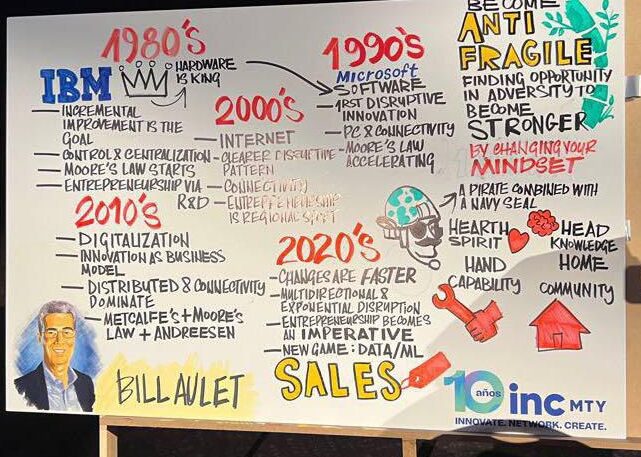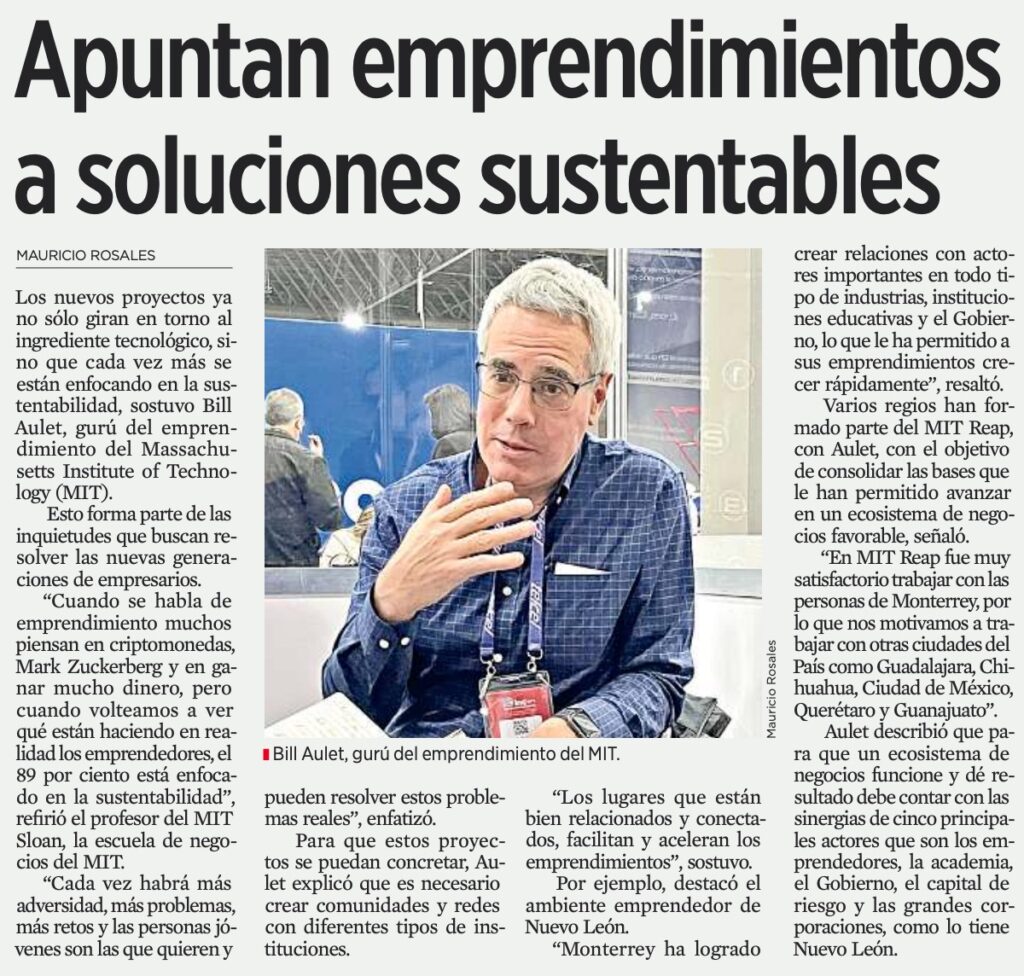The Disciplined Entrepreneurship Toolbox
Stay ahead by using the 24 steps together with your team, mentors, and investors.
Sign up for our newsletter
In my all-consuming job at MIT, it is very easy to just stay in Cambridge, keeping busy and feeling satisfied. It takes some effort to overcome the inertia to get out and see what else is going on, but when I do, I always enjoy it and learn something new.
This past week I took a trip to Monterrey, Mexico for the 10th Anniversary of the INCmty Festival to support the amazing Monterrey REAP Team. MIT REAP (Regional Entrepreneurship Acceleration Program) was started by Scott Stern, Fiona Murray, Ed Roberts, and I in 2011 to bring a systematic and disciplined approach to the question we got all the time, “How do we build an entrepreneurial ecosystem like you have at MIT?” Over the years we have had many participants; 51 regional teams in 7 cohorts.
Building an innovation-driven entrepreneurial ecosystem is incredibly hard and the landscape is littered with unsuccessful attempts (see Josh Lerner’s Boulevard of Broken Dreams). It takes a multi-stakeholder approach (entrepreneurs, academic institutions, risk capital, government, corporates) while simultaneously keeping the entrepreneur at the center of every discussion, which sounds easier than it is in practice. Because it is hard and takes a long time to make progress, REAP is two years in length, which requires a long-term commitment from the teams as well as a long-term vision coupled with short-term and medium-term milestones to ensure progress toward the ultimate goal.
While many have gotten enormous value out of the program, no one has gotten more than the diverse and vibrant team from Monterrey. They have utilized the program as an opportunity to build connective tissue across the various players in the ecosystem to the level that, two years after the program’s formal completion, the various stakeholders still get together every week for an hour to discuss progress, issues, and plans going forward.
Monterrey is the second or third largest city in Mexico (depending on who and when you ask) that is a two-hour drive from the U.S. border. It has become a global hub of industrial manufacturing excellence – sometimes referred to as the Detroit of the South. It is also blessed with the great academic institution, Tecnológico de Monterrey, which was patterned after MIT and is very practical and equally entrepreneurial-focused.
The region is an area that started from a strong base but was humble enough to say it could and must do better. As they worked through the two years of REAP, they made extraordinary progress. Here is a highlight of some of those accomplishments from Dr. Antonio Ríos Ramírez’s presentation at INCmty:
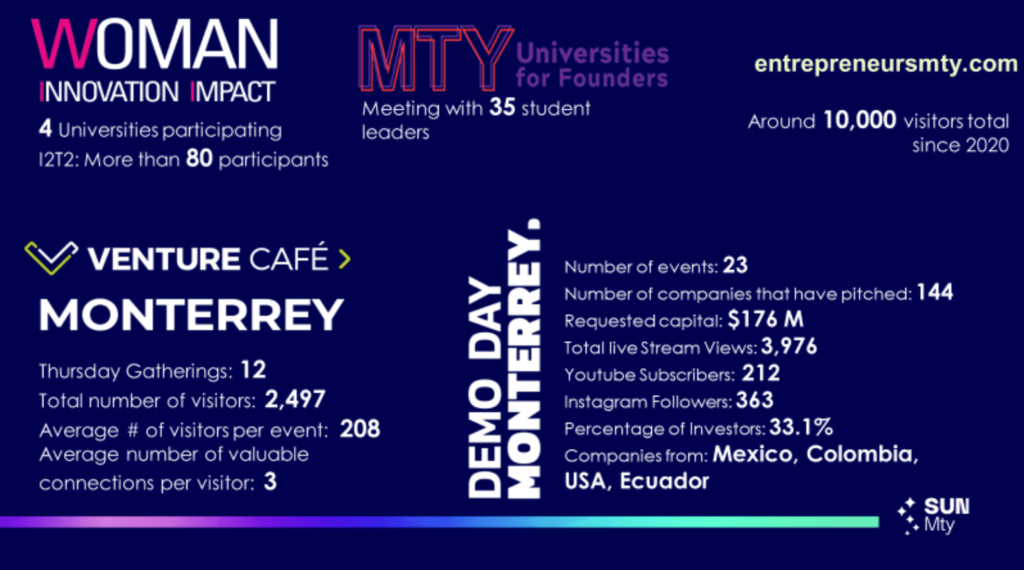
But after they finished the program with these accomplishments, they were not satisfied. They knew that they could and should do more. They understood that entrepreneurial ecosystems are not a zero-sum game, but rather follow the rules of Metcalfe’s Law: that the more entrepreneurs and entrepreneurial ecosystems there are and the more they are connected, the value to each node on the network grows exponentially bigger (based on the number of quality nodes) and everyone gains.
As a result, they set out to take their new-found knowledge and experience and roll out a domestically focused REAP program for five regions of the country – MIT REAP Focus Mexico. Today they are running this program and the regions (including Mexico City, Guadalajara, Chihuahua, Guanajuato, and Queretaro), and everyone is working together and benefiting greatly. While I was in Monterrey, I was fortunate to be able to experience first-hand being in a room with the teams and seeing them working together. The atmosphere and energy were electric.
INCmty is just one of the REAP initiatives and this one was led by risk capital stakeholder Rogelio de Los Santos, who won a community award at the conference for his selfless and effective efforts. “INC” stands for Innovation Networking and Creativity and “mty” stands for Monterrey. The festival is now in its 10th year and has grown such that this week it had thousands of participants.
I was deeply honored to be able to come and support the cause by giving a supportive speech at this conference with my friend and Monterrey REAP team member, Dr. Antonio Ríos Ramírez. My talk focused on the past, present, and future of innovation-driven entrepreneurship. It was a chance to reflect on the arc of entrepreneurship over my career starting in 1980 to today and to look forward to what comes next. Things have progressed from when I first started when entrepreneurs were considered eccentrics. The nature of entrepreneurship was fundamentally commercializing R&D primarily driven by Moore’s Law at a relatively slow and manageable pace relative to today’s mind-blowingly different world.
Today is a world where entrepreneurs are pretty much universally admired. They are essential antifragile leaders in a world that is being disrupted at a dizzy rate resulting from the combined and compounding effects of not just Moore’s law but also Metcalfe’s Law, Andreessen’s mostly fulfilled promise of the digitization of the world with software, and now the almost frightening pace of progress relative to Data, Data Analytics, and Machine Learning (really just getting started). It was fun to think about this arc of history and what it means going forward. It is the first time I have done this talk and one I am going to work more on, starting this coming week at the FLY ASIA Conference in Korea (via Zoom).
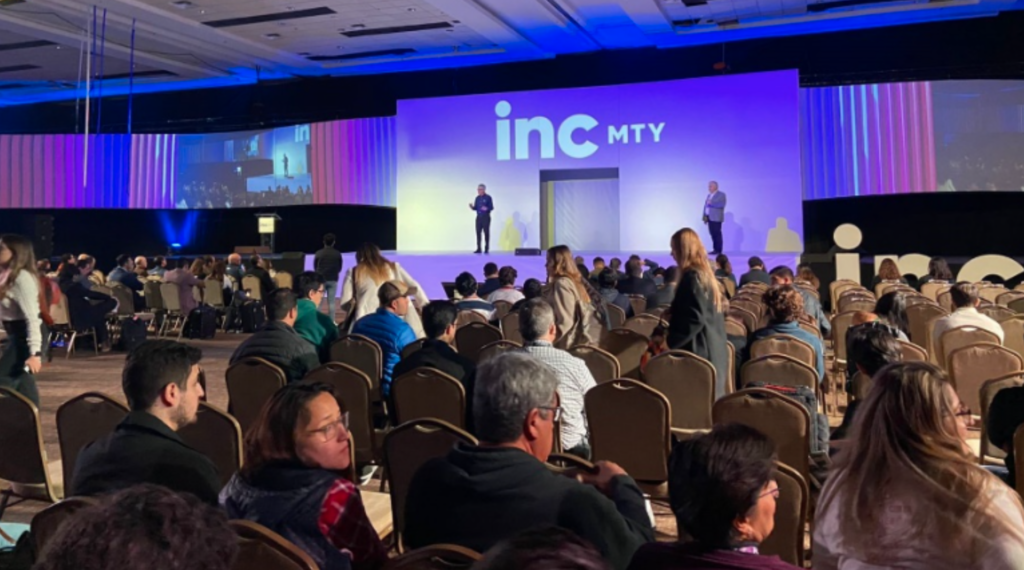
Spoiler alert, all of this means we need more entrepreneurs, and higher quality entrepreneurs who are better connected (note: that is generally the answer; not sure what the question is, but that is generally the answer).
A point of the talk that was particularly relevant to the context of this event is that the problems we face as businesses and society are getting bigger and bigger and so we also increasingly need more than startups going forward. We need entrepreneurs who can scale. So, within this environment, the MIT REAP Monterrey team announced the launch of Monterrey Scale Up Nation (notice the play on Israel’s Startup Nation theme – clever, no?).
Again from Dr. Antonio’s presentation, here is a high-level description of the program:
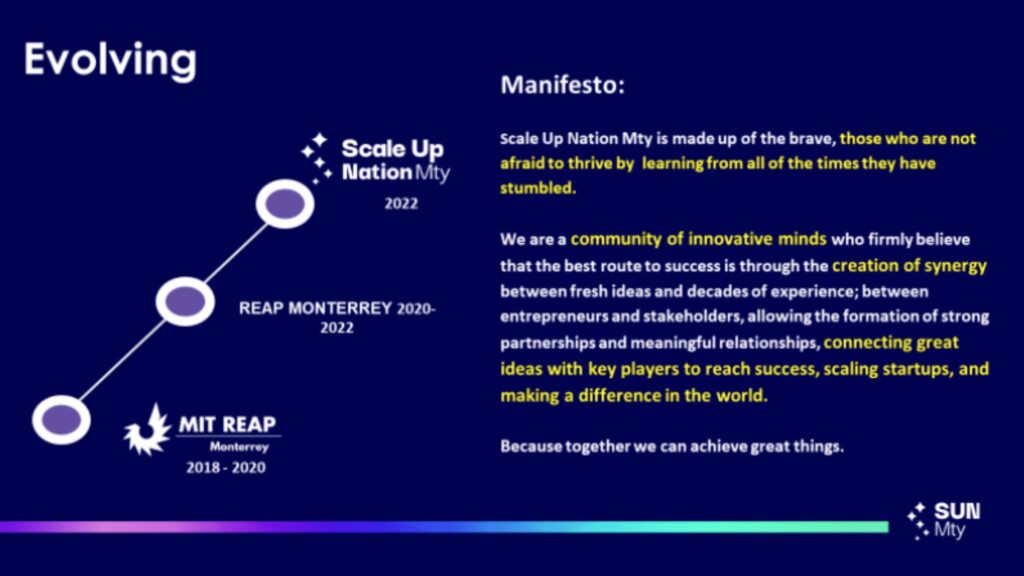
What does this translate to? The creation of more entrepreneurs with scaling capabilities. That being said, it is critical to measure results to produce a focus on achievement rather than activity and the Monterrey REAP team understands this. They have identified 3 priorities towards this end:
- Golden Flag: Building strong connections with partner cities in Texas that geographically form a flag – Houston, Dallas, Austin, and San Antonio. They do not intend to go it alone (very smart) but work with others. This is one of the most powerful economic drivers in the world today and rather than compete, Monterrey is taking the intelligent approach to collaborate.
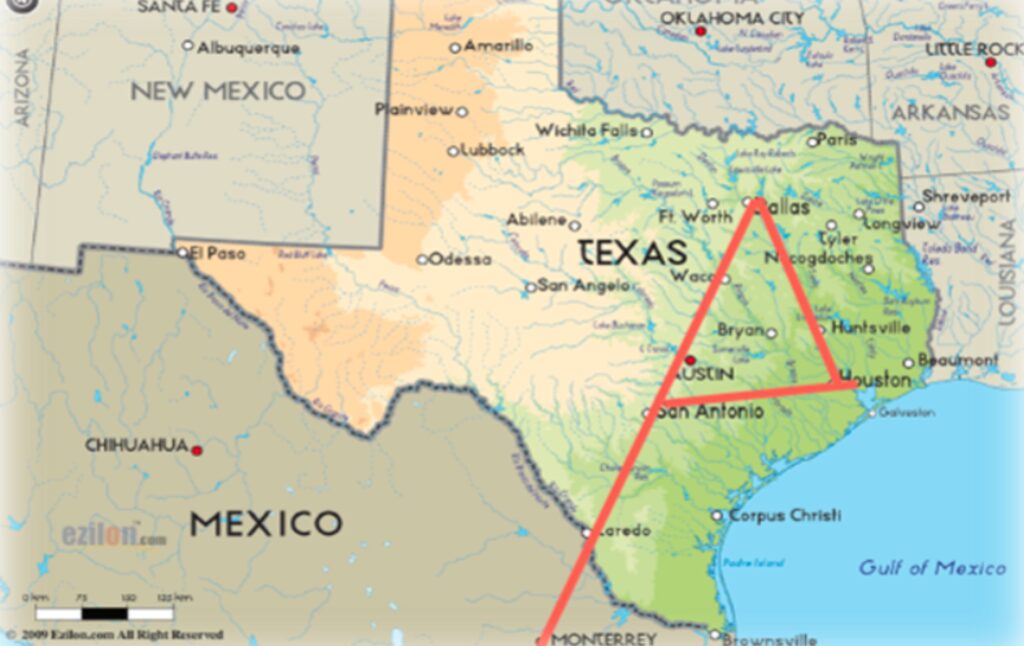
- Tech companies in MTY: They are going to measure their program with a dashboard beginning with data points they can capture and grow their KPIs from there. These include:
- # of IDE companies
- # of IDE entrepreneurs
- $ IDE financing
- $30B from IDEs: Ultimately, the goal in 10 years is to have almost a third of the revenue from their region coming from IDE companies. Today, they do not even measure it, but they are sure it is a small fraction of this goal. The $30B target is bold and just the kind of motivation the region needs.
Importantly, the team has not just set goals but determined a plan, funding, and a governance structure to achieve this transformational goal.
Will they hit these goals or exceed them? I don’t know for sure but I do know I would not bet against them based on history. I also know that setting such BHAGs (Big Hairy Audacious Goals) is what all of us should be doing now as we see the challenges ahead. I am so proud of the Monterrey REAP team and so happy to have been part of the journey. Thankfully it is not done yet. Stay tuned.
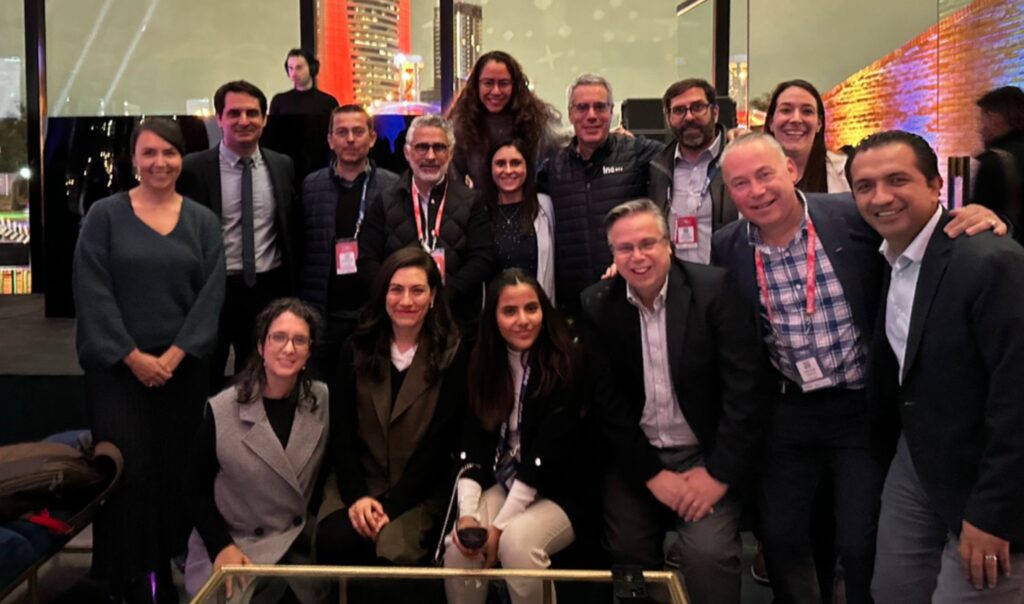 Special Thanks to Blanca Flores for making the visit so productive and drama-free. And to Patricio Villareal and Sofia Castillo for five-star driving and great conversation. Also, to Victor Trevino for a wonderful dinner and conversation on how corporates can help not just with IDEs, but also with climate change.
Special Thanks to Blanca Flores for making the visit so productive and drama-free. And to Patricio Villareal and Sofia Castillo for five-star driving and great conversation. Also, to Victor Trevino for a wonderful dinner and conversation on how corporates can help not just with IDEs, but also with climate change.
Final Important Note:
While I travel less these days, it is always so rewarding to meet former students who have put the “Disciplined Entrepreneurship” methodology to work to create jobs and make the world a better place. There were several at the conference whom I took pictures with, but would love to hear your stories in more depth (please share them here or wherever you feel most comfortable). That is not just how we learn but also gives us the extra energy to keep pushing forward. I know I missed you Mercedes Bidart, but am so happy for your success in creating more financial inclusion in LATAM with Quipu. Keep up the great work and help us spread the knowledge to make more, higher quality, and better-connected entrepreneurs throughout the world. Just yesterday I had the great pleasure to meet Hugo (never got his last name) on the subway here in NYC. When he first came up and introduced himself, he apologized for just anonymously walking up and saying hello and telling me had taken the Entrepreneurship 101 course. He recognized me and wanted me to know that while he had not yet started a company, it has given him the confidence to be more entrepreneurial, and someday he wants to and believes he can. I had to correct him and ask him not to apologize, but instead, thank him for taking the initiative. It is so rewarding to hear. Thank you to all who make the educator feel good about what we do. It is the ultimate reward.
And some extra materials (an illustration created based on my talk and a press review in Negocios):
The author
Bill Aulet
A longtime successful entrepreneur, Bill is the Managing Director of the Martin Trust Center for MIT Entrepreneurship and Professor of the Practice at the MIT Sloan School of Management. He is changing the way entrepreneurship is understood, taught, and practiced around the world.

The books
This methodology with 24 steps and 15 tactics was created at MIT to help you translate your technology or idea into innovative new products. The books were designed for first-time and repeat entrepreneurs so that they can build great ventures.

How relevant was this article to you?
Click on a star to rate it!
Average rating 5 / 5. Vote count: 2
No votes so far! Be the first to rate this post.
We are sorry that this article was not useful for you!
Let us improve this post!
Tell us how we can improve this post?

